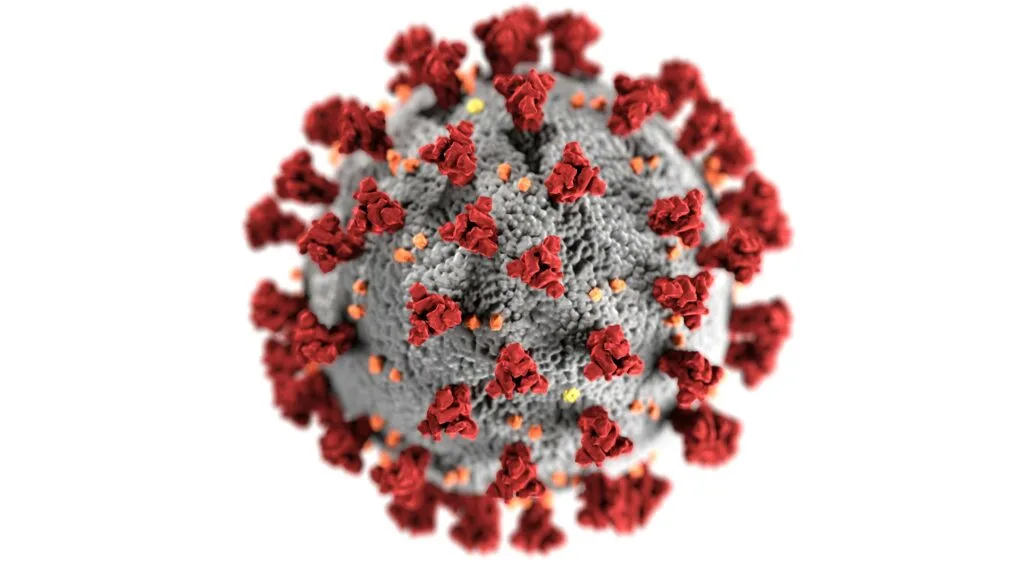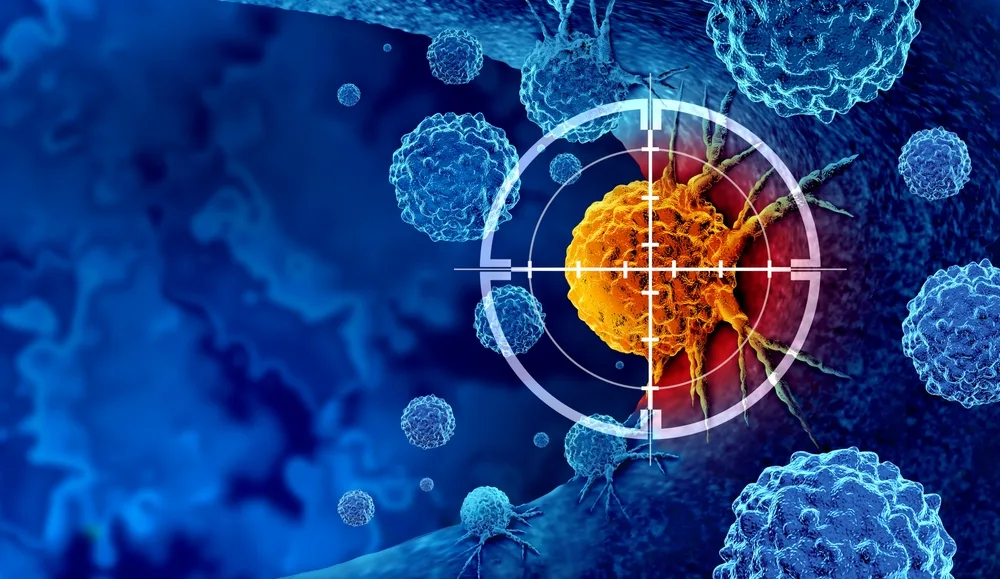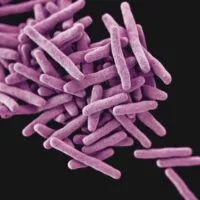Imagine standing on the edge of a forest, listening to the quiet rustle of wings overhead. Somewhere among the trees, a virus you’ve never heard of is one genetic twist away from rewriting the course of global health. It’s not science fiction—it’s the story unfolding in real time, deep within bat populations in China.
The virus is called HKU5-CoV-2, a distant cousin of MERS and SARS, and scientists say it’s alarmingly close to gaining the ability to infect humans. One small mutation. That’s all it would take.
If that sounds eerily familiar, it should. Nearly 75% of emerging infectious diseases in humans originate from animals, and after COVID-19, the world knows all too well how quickly “almost” can become “everywhere.” So what makes HKU5-CoV-2 different—and why are researchers paying such close attention now?
What Is HKU5-CoV-2?
HKU5-CoV-2 is a newly identified coronavirus originating from bats in China, and it’s part of a lesser-known viral family known as merbecoviruses. While not yet a household name, this group includes a notorious member: MERS-CoV, the virus behind Middle East Respiratory Syndrome. MERS first emerged in 2012 and carries a strikingly high fatality rate of approximately 34%, making its viral relatives worth close scientific scrutiny.
What sets HKU5-CoV-2 apart is not just its lineage, but its biological potential. This virus is structurally similar to both MERS and SARS-CoV-2, the virus that caused COVID-19. It uses a “spike” protein to interact with cells via the ACE2 receptor—a protein found in human respiratory and intestinal tissues, and a known entry point for multiple coronaviruses. Currently, HKU5-CoV-2 is adapted to infect bat cells, but evidence shows it is dangerously close to binding with human ACE2 receptors.

The virus was first identified through bat surveillance across southern and eastern China. Researchers collected hundreds of samples and used genetic sequencing to detect this particular strain. Among those, HKU5 Lineage 2 stood out for its ability to bind not just to bat ACE2 but also to human ACE2 in controlled laboratory conditions. This makes it a clear candidate for potential spillover—a term scientists use to describe a virus jumping from animals to humans.
Adding another layer of complexity, HKU5-CoV-2 was originally studied at the Wuhan Institute of Virology, a site already under intense scrutiny for its possible link to the origins of the COVID-19 pandemic. While there is currently no evidence that HKU5-CoV-2 has infected humans, its genetic architecture and cross-species potential have positioned it firmly in the spotlight of pandemic preparedness.
What Makes This Virus Concerning?

The core concern lies in the virus’s spike protein, the structure it uses to latch onto host cells. For a coronavirus to infect humans, it must be able to bind to the ACE2 receptor—a cellular gateway found in the human throat, lungs, and gastrointestinal tract. In recent lab experiments, researchers discovered that while HKU5-CoV-2 cannot currently infect human cells efficiently, just a single mutation in the spike protein could alter that.
This isn’t speculation. Using both traditional lab methods and AI modeling tools like AlphaFold 3, scientists demonstrated that once specific mutations were introduced, the virus showed increased ability to enter cells bearing human ACE2. Some variants, like HKU5 Lineage 2, have already shown partial compatibility—suggesting that natural evolution could close the remaining gap, especially if the virus passes through an intermediate animal host like minks or civets, which have previously acted as viral bridges.
Adding to the risk is the virus’s close genetic relationship to MERS-CoV, which is not only lethal but also zoonotic—transmissible from animals (specifically camels) to humans. That history reinforces the concern that merbecoviruses, of which HKU5-CoV-2 is a part, may already possess many of the tools needed for cross-species transmission.
Moreover, viruses like HKU5 don’t need to go straight from bats to people. They can move silently through animal populations, accumulating mutations in hosts that are often part of human food or fur supply chains. The unregulated wildlife trade and live animal markets, still present in parts of China and other regions, increase the odds of such “spillover events.”
While HKU5-CoV-2 hasn’t yet made the leap to humans, the scientific community views its trajectory as a near miss in evolutionary terms. That closeness—not just genetically, but functionally—is what transforms this from an obscure lab finding into a global health concern.
As Dr. Michael Letko, a virologist at Washington State University and lead author on the study, put it: “These viruses are so closely related to MERS, so we have to be concerned if they ever infect humans.”
What Researchers Have Learned So Far

Behind the headlines about HKU5-CoV-2 is a sophisticated, multi-institutional effort to understand this virus before it can evolve into a crisis. At the center of that effort are researchers from Washington State University, Caltech, and the University of North Carolina, collaborating with virologists in China, including teams from the Wuhan Institute of Virology and the Guangzhou Laboratory. Together, they’ve taken a proactive approach—one grounded in molecular science, structural biology, and artificial intelligence.
To explore how HKU5-CoV-2 might infect human cells, scientists used pseudoviruses—harmless, lab-constructed virus particles equipped with the spike protein from HKU5. These pseudoviruses were then introduced to different types of cells, some containing bat ACE2 receptors, others with human ACE2. When the virus successfully entered a cell, it caused the cells to glow—a visual confirmation of infection.
The results were clear: while HKU5 easily infected bat cells, human cells only lit up when the spike protein carried specific mutations, confirming that a slight genetic tweak could unlock human infectivity.
To visualize how these spike proteins interact with ACE2 receptors at the atomic level, researchers turned to cryo-electron microscopy, a cutting-edge imaging technology that captures virus structures in ultra-high resolution. They found that in its current form, the virus’s spike protein largely stays in a “closed” conformation—less likely to infect—but not incapable. With the right mutation, it could shift to an “open” state, making cell entry more efficient.

Meanwhile, AI tools like AlphaFold 3, developed by DeepMind, allowed researchers to simulate these structural changes in silico—predicting how a mutated spike might behave without waiting for nature to run its course. Remarkably, the AI predictions closely mirrored outcomes from the physical lab experiments, offering a powerful new way to forecast viral evolution in real time.
On the Chinese research front, virologist Shi Zhengli, widely known for her extensive work on bat coronaviruses, led parallel studies showing that HKU5 Lineage 2 could bind to human ACE2 not just in test tubes, but also in human tissue models of airways and intestines. This further validates the risk that some forms of the virus may already be edging toward zoonotic capability.
Beyond mapping infection mechanics, researchers are already testing monoclonal antibodies and antiviral drugs against HKU5-CoV-2—an effort to build medical defenses before a real-world outbreak begins. It’s a reminder that while the virus itself is new, the response has not waited for a crisis to unfold.
How to Interpret the Risks
The idea of a virus being “one mutation away” from infecting humans can sound ominous—especially after a global pandemic. But experts emphasize an important distinction: urgency doesn’t equal inevitability. HKU5-CoV-2 hasn’t crossed into humans yet, and that fact gives public health systems and researchers a critical window to prepare.
According to the World Health Organization, merbecoviruses—including HKU5-CoV-2—are now officially listed among priority pathogens for pandemic preparedness. This doesn’t mean a new outbreak is expected tomorrow. It means the virus has the genetic and ecological potential to become a threat, and therefore warrants surveillance, research, and international cooperation.
So what does “preparedness” actually look like?
It means monitoring wildlife reservoirs where viruses like HKU5 circulate. It means regulating and reducing human exposure to intermediate animals—such as minks, civets, or raccoon dogs—that have been implicated in previous spillovers. And crucially, it means advancing vaccines, antiviral therapies, and diagnostic tools tailored to merbecoviruses before they’re needed in emergency rooms.
Historically, coronaviruses have caught the world off guard. SARS in 2003, MERS in 2012, and COVID-19 in 2019 all revealed gaps in how we detect and respond to emerging pathogens. What differentiates the current moment is that scientists now have real-time insight into potential threats—before they spread.
Even so, there’s a fine line between vigilance and fear-mongering. As Dr. Michael Letko, one of the leading researchers behind the HKU5 study, noted: “There’s no need to panic, but there is every reason to prepare.”
Understanding this distinction is key for the public. Panic leads to misinformation, stigma, and poor decision-making. Preparation leads to resilience. And with the lessons of COVID-19 still fresh, both governments and individuals have a clearer blueprint for how to respond without overreacting.
How This Time Can Be Different

When SARS-CoV-2 emerged in late 2019, global systems were largely reactive. Diagnostic tools were developed in a rush. Vaccine platforms had to pivot under pressure. Health infrastructure cracked under the weight of unpreparedness. HKU5-CoV-2, by contrast, is being studied before it has infected a single human. That timing could make all the difference.
This time, we have tools that didn’t exist—or weren’t fully deployed—in the early days of COVID-19. AI models like AlphaFold can predict how viral proteins will evolve. Structural imaging gives us blueprints for vaccine targets before human cases ever appear. And perhaps most importantly, international research collaborations are happening now, not in the aftermath of a crisis.

Another key lesson from COVID-19 is the importance of global surveillance and transparency. The early suppression of outbreak data in 2019 allowed the virus to spread undetected across borders. Today, HKU5-CoV-2 is being flagged early—thanks in part to the vigilance of researchers in both China and the U.S. That kind of open scientific exchange is not just good practice; it’s a global safeguard.
COVID-19 also showed us that pandemics are not just biomedical events—they are social, economic, and political stress tests. They challenge how we care for each other, how we trust institutions, and how we manage misinformation. Any future threat, including HKU5-CoV-2, will bring similar pressures. But armed with knowledge and historical hindsight, our response doesn’t have to follow the same path.
Preparedness now means investing in universal vaccine platforms, stockpiling antiviral agents, strengthening local healthcare systems, and addressing the environmental and human behaviors—such as wildlife trade and habitat destruction—that drive zoonotic spillovers in the first place.
Staying Informed, Not Fearful
Emerging viruses like HKU5-CoV-2 remind us that nature is constantly evolving—sometimes in ways that intersect uncomfortably with human life. But fear isn’t the lesson here. Awareness is.
The fact that scientists have identified a virus with pandemic potential before it crosses into humans is not a reason to panic—it’s a rare opportunity to get ahead. HKU5-CoV-2 is a warning shot that comes with time to prepare, to fund preventive research, and to rethink how we interact with wildlife and global health systems.
For individuals, staying informed means being discerning about what we read and share. It means trusting credible science, supporting public health initiatives, and rejecting misinformation that breeds complacency or hysteria. The goal isn’t to live in fear of the next virus, but to live responsibly and resiliently in a world where new pathogens will inevitably emerge.
The COVID-19 pandemic taught us the cost of ignoring early signs. HKU5-CoV-2 is one of those signs. This time, the world has a head start. The question is—will we use it?




Newell Runolfsson
Monday 9th of June 2025
Wonderful beat I wish to apprentice while you amend your web site how could i subscribe for a blog web site The account aided me a acceptable deal I had been a little bit acquainted of this your broadcast provided bright clear idea
축구중계
Saturday 7th of June 2025
Your writing has a way of resonating with me on a deep level. It's clear that you put a lot of thought and effort into each piece, and it certainly doesn't go unnoticed.
탑플레이어포커
Saturday 7th of June 2025
탑플레이어포커 머니상: https://www.pokertopplayer.com/